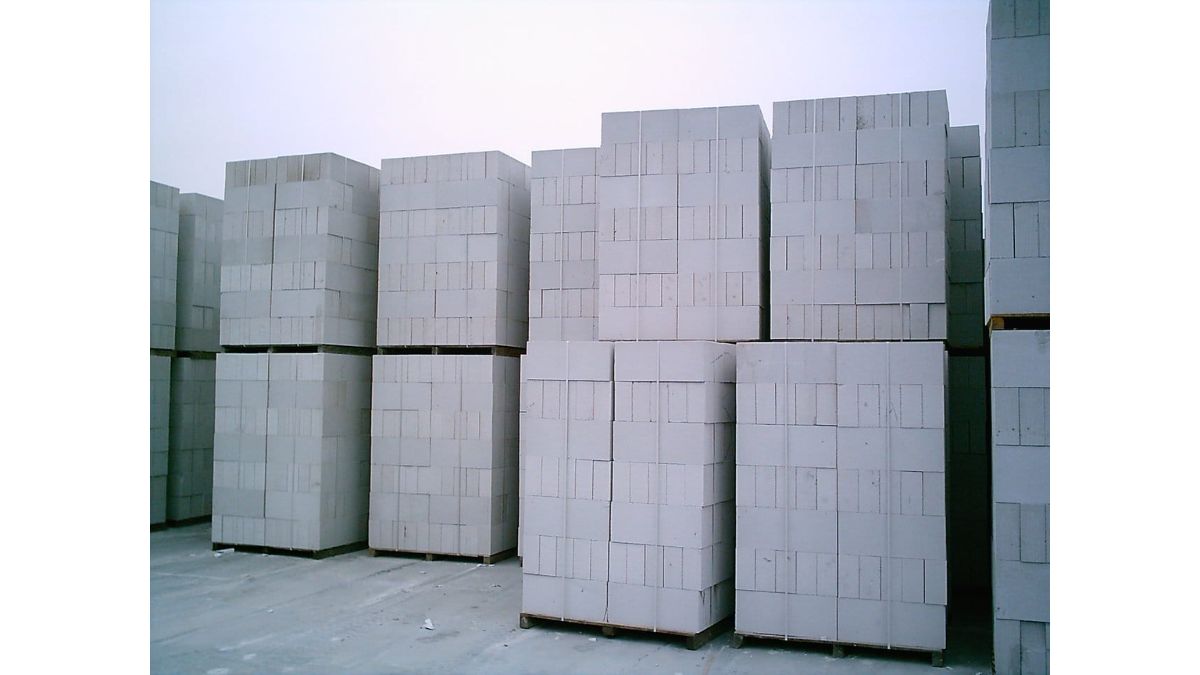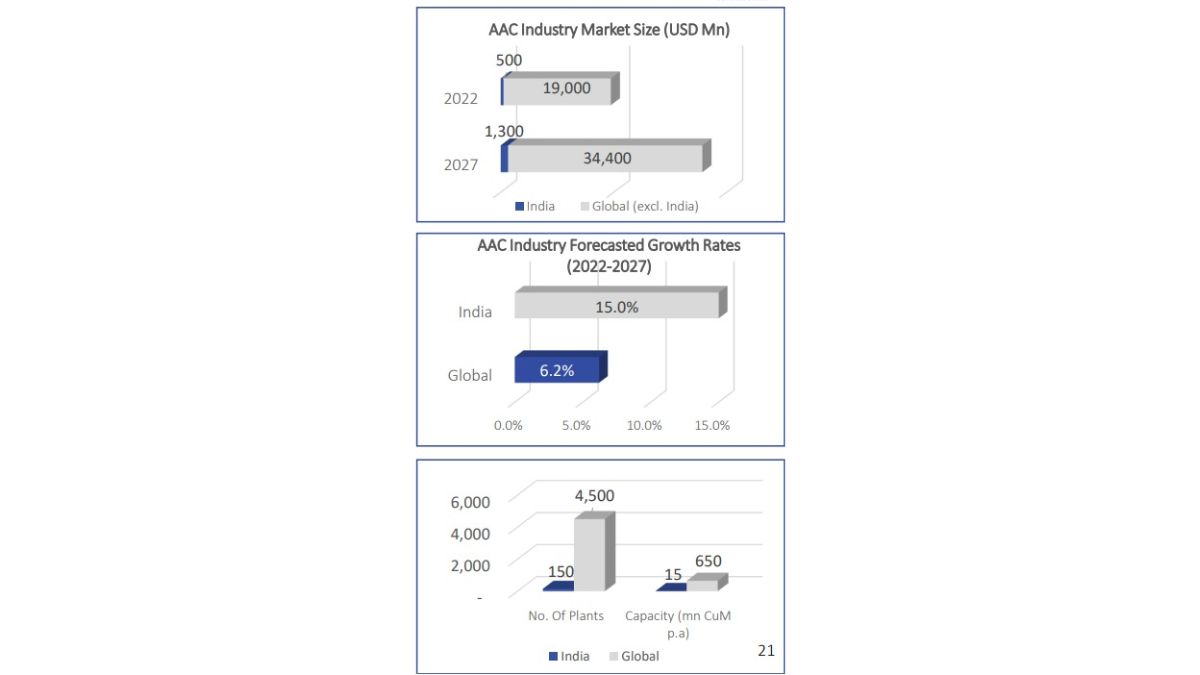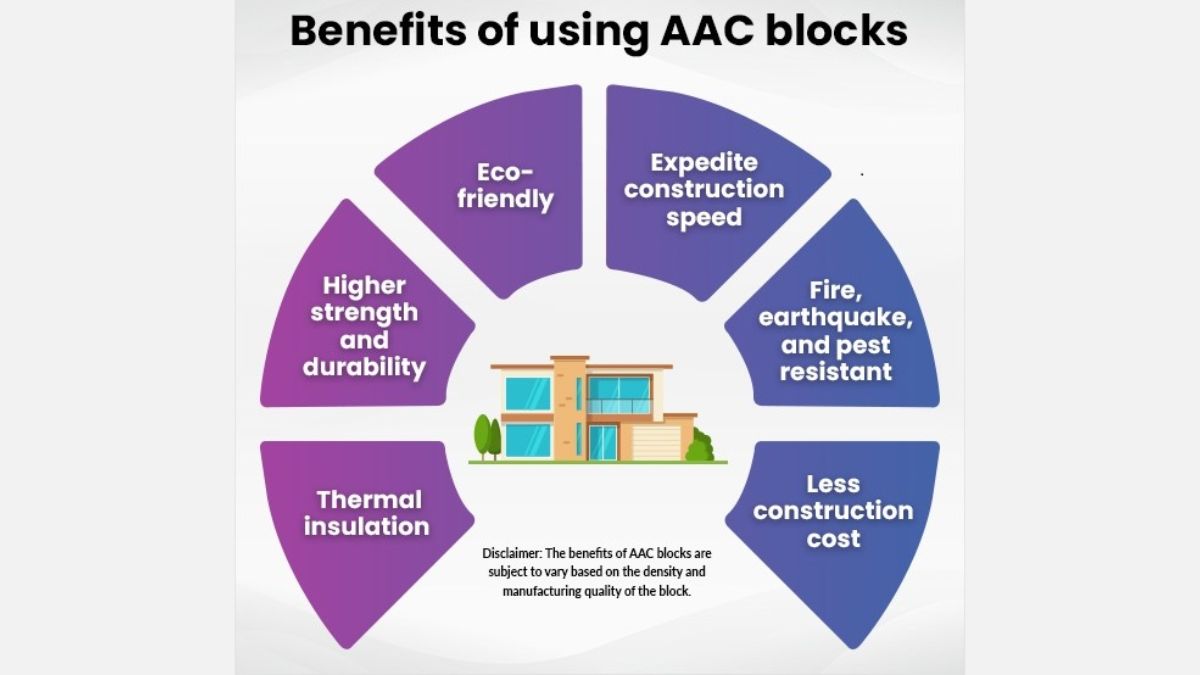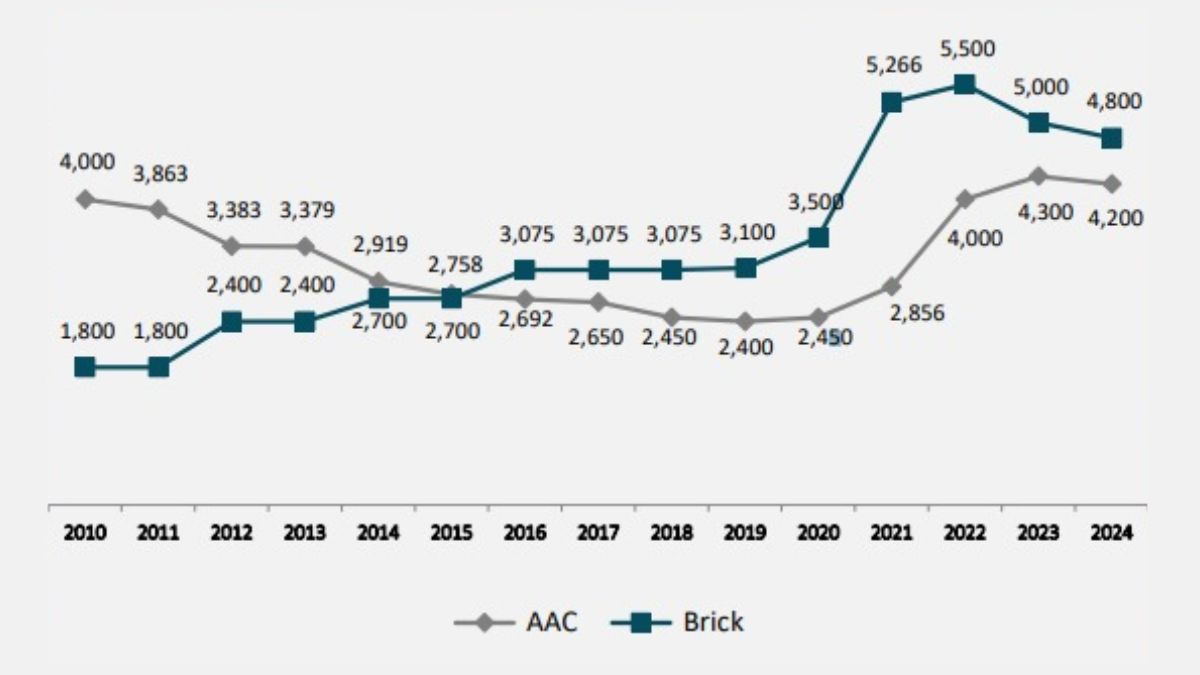AAC Blocks: Building A Formidable Future of Construction
Highlights Owing to a number of factors especially surge in demand and increasing penetration, the price of AAC blocks has gone up by Rs 200- Rs 300 per cubic meter and expected to rise further Indian AAC blocks market is anticipated to register a CAGR of 15%-18% in next five years to reach Rs 8000- [...]

Highlights
- Owing to a number of factors especially surge in demand and increasing penetration, the price of AAC blocks has gone up by Rs 200- Rs 300 per cubic meter and expected to rise further
- Indian AAC blocks market is anticipated to register a CAGR of 15%-18% in next five years to reach Rs 8000- Rs 10,000 crore.
- While penetration of AAC Block in building application is 8-10% of the industry whereas 75-80% of the industry is still dominated by Red Bricks, the switch to AAC Block is gradual and gaining momentum.
- AAC Block as a preferred choice over redbricks due to its unique combination and superior build properties like strength, low weight, thermal insulation, sound absorption, unrivalled fire resistance etc
- India is likely to witness an investment of around USD 1.3 trillion in housing over the next seven years.
Mumbai (Maharashtra) [India] September 13: The AAC (Autoclaved Aerated Concrete) market in India is experiencing significant growth. Global market size (2022-23) stands around USD 19 bn (Rs. 1.5 lakh cr) and is poised to grow at 6.2% over the next 5 years whereas Indian market size (2022-23) stands around USD 0.5 bn (RS 4,000 cr) and is poised to grow at 15-20% over USD 1.3 bn (RS 10,000 cr) in the next 5 years. In India, the demand of AAC block has grown immensely in the past few years which is still growing around 8-10% every year.
AAC was a meagre Rs 50 crore industry in 2008 and it has grown to about RS 4,000 crore in India (CAGR of 58%). It is expected to reach — Rs. 8,000 – 10,000 Cr in the next five years at a CAGR of 15-20%. There are more than 150 AAC block plants in India with total installed capacity of around 12 million Cubic meter per annum.

As the country continues to urbanize and prioritize sustainable construction, the market for AAC blocks is expected to remain strong.
Recently, the prices of AAC blocks have increased by Rs 200- Rs 300 per cubic meter. A number of factors have contributed to the recent increase. Construction activity which was slow in the first half of the FY25 due to Union Election in the first quarter and monsoon season has picked up a great deal and with that demand of AAC blocks has also gaining strong momentum.
Highlights
- Owing to a number of factors especially surge in demand and increasing penetration, the price of AAC blocks has gone up by Rs 200- Rs 300 per cubic meter and expected to rise further
- Indian AAC blocks market is anticipated to register a CAGR of 15%-18% in next five years to reach Rs 8000- Rs 10,000 crore.
- While penetration of AAC Block in building application is 8-10% of the industry whereas 75-80% of the industry is still dominated by Red Bricks, the switch to AAC Block is gradual and gaining momentum.
- AAC Block as a preferred choice over redbricks due to its unique combination and superior build properties like strength, low weight, thermal insulation, sound absorption, unrivalled fire resistance etc
- India is likely to witness an investment of around USD 1.3 trillion in housing over the next seven years.
Raw material costs especially that of cement, lime, coal too has firmed up with surge in construction activity and infrastructure projects getting back on track post monsoon.
Looking at the current scenario and robust demand growth of AAC Blocks, prices are expected to increase further in the coming days.
Further the conversion from brick to block is gradually gaining momentum. A number of factors are playing an important role in making AAC Blocks the choice of building material. Few of these factors including increase in cost of red bricks and Rapid Infrastructure Development.
In Metros, Builders and top developers have shifted to AAC blocks and adoption is over 60-70%. Demand from Tier II and industrial segment is going strong. In Tier II cities also 40% industry has shifted to AAC blocks.
Use of AAC blocks are expected to grow stupendously in the coming years owing to increased awareness, growth in the infrastructure sector, demand for affordable housing, environmental concerns and several other beneficial attributes over red clay and fly ash bricks. Government’s impetus through numerous infrastructure & housing projects and regulations to use eco-friendly construction material under its net-zero on emission mission, are the primary factors for the growth of AAC.
India is likely to witness an investment of around USD 1.3 trillion in housing over the next seven years. The Indian government’s ‘Housing for All by 2024’ is also a major game changer for the industry. Projects such as Pradhan Mantri Awas Yojana, Police Housing, Kanya Shiksha Parishar, etc. where the Government has made mandatory to green building material i.e AAC blocks, Fly Ash blocks for all its infrastructure projects which is a big positive for the industry.

Red Bricks vis a vis AAC Blocks
Since decades, red bricks have been a traditional choice due to their availability and affordability. However, AAC blocks are proving to be stronger, sustainable and durable alternative to red bricks. AAC blocks fare better than red bricks when it comes to following parameter:
Compressive Strength: AAC blocks generally have higher compressive strength compared to red bricks. AAC blocks, which are manufactured in specialized factories, offer compressive strengths of 3 to 4.5 N/mm². In contrast, red bricks, widely available but less engineered, provide compressive strengths of 2.5 to 3.5 N/mm².
Durability: AAC blocks are designed to be more durable and homogeneous, enhancing the overall strength of structures and minimizing waste and construction defects. Red bricks, being more fragile, can lead to higher wastage and maintenance needs.
Utility and Workability: AAC blocks are lighter and thinner than red bricks, making them easier to handle, transport, and incorporate into construction projects. This lightweight nature results in reduced labor costs and faster construction, as well as increased usable space in buildings.
Sustainability: As recycled product made from fly ash (a by-product of thermal power plant), AAC blocks are environmentally friendly. In contrast, the production of red bricks depletes topsoil and can have detrimental environmental effects.

Additional Features:
- Fire Resistance: AAC blocks offer up to 4 hours of fire resistance, compared to 2 hours for red bricks.
- Sound Insulation: AAC blocks provide superior sound insulation.
- Thermal Insulation: AAC blocks excel in thermal insulation, reducing HVAC costs by 25-30%, while red bricks offer minimal insulation.
- Earthquake and Pest Resistance: AAC blocks are designed to withstand seismic activity and resist pests like termites, unlike red bricks.
- Water Penetration: AAC blocks absorb less water (up to 10% by weight), making them suitable for various weather conditions, whereas red bricks absorb more water.
Most importantly, rejection rate in Bricks is 10-15% higher than AAC. Also 9 Bricks equals 1 AAC block, therefore rejection rate is further lower for AAC.
The above stated reasons solidify the efficacy of AAC Blocks in long run. With increasing awareness, government support, urbanization, technological advancements, and cost-effectiveness, AAC blocks are poised to play a significant role in the country’s construction industry.
If you have any objection to this press release content, kindly contact pr.error.rectification@gmail.com to notify us. We will respond and rectify the situation in the next 24 hours.










